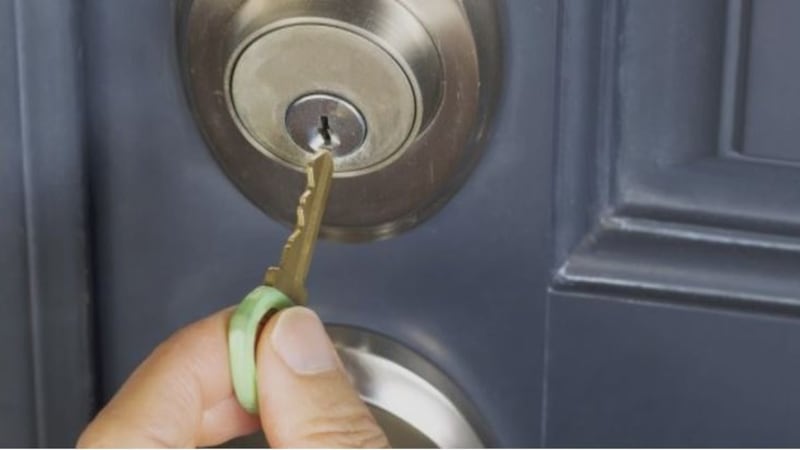If you do the sums, it can be quite staggering how the figures add up. With an average monthly rent of about €1,745 in Dublin, a single person or couple will spend about €21,000 a year, or more than €60,000 after three years. A long-term renter could easily spend a multiple of six figures on rent – enough to make a substantial dent in the price of a home.
But what if this rent were not simply dead money but could be offset against the purchase of the property the potential home-buyer is living in?
With rents remaining puzzlingly high despite some 18 months of a global pandemic, could allowing tenants to put their rent towards a down payment on a home help in a supply-strapped housing market?
Here, we take a look at how it could work.
What is rent-to-buy?
Rent-to-buy is not an entirely new concept in Ireland. Back in 2009, as the edifice upon which the Celtic Tiger was built started to crumble and burn, developers looked at ways of selling off new-builds that had almost overnight appeared to be outrageously overpriced, when the promise of 100 per cent mortgages were sharply withdrawn.
One such example was the Easisteps scheme, which was available at a number of developments around the country, including Belarmine in Stepaside and Rathborne Village in Dublin 15.
Under the scheme, the putative buyer signed a contract for purchase upfront, subject to loan approval, as well as a schedule of deposit payments. Once the last “rental” payment was made, the tenants could purchase. It required a down payment of about €5,000 and meant that tenants who had this could move in straight away and work themselves up to purchasing the property.
Other schemes were more akin to typical rental leases, with the option of purchasing the home at the end of the rental period at the pre-agreed price. All rent paid was to be deducted from the purchase price.
There is also a precedent for the State to get involved. Back in around 2010, Dublin City Council embarked on such a scheme when it was left with affordable-housing units it couldn’t sell.
Since then, however, such a concept has largely moved out of the Irish market. There are some similar schemes aimed at social housing – some local authorities also allow existing tenants to purchase their home under the incremental purchase scheme – while a reverse-type scheme, mortgage-to-rent, is also in place. This means that if you can’t afford your mortgage, you can sell your home to an approved housing body, which then buys your home from your lender and rents it back to you. You then become a social-housing tenant.
RENT NOW, BUY LATER: TWO IRISH EXAMPLES
Two-bed house in Crumlin, Dublin 12: See it here
Purchase price €295,000
Deposit needed €29,500
Monthly rent €1,600
Down payment after three years of renting €57,600
New purchase price €237,400
Two-bed apartment at Grand Canal Dock, Dublin 2: See it here
Purchase price €550,000
Deposit needed €55,000
Monthly rent €2,200
Down payment after three years of renting €79,200
Possible new purchase price €470,800
International experience
The dearth of rent-to-buy schemes in Ireland is not the case elsewhere.
In New York, for example, a growing number of private developers are offering rent-to-own-type schemes. At One Manhattan Square, on the lower east side, you can get 100 per cent of your first year’s rent (from $3,600 a month/$43,200 a year) put against the purchase price of a property, with prices starting at about $1 million for a one-bed.
In postpandemic New York, however, such schemes may have parallels with postboom Ireland, as a tool used by developers to shift stock when faced with lacklustre sales.
Another approach is the UK’s, where the government runs a scheme aimed at households with an income of no more than £80,000 (about €93,000). This allows putative home-buyers to rent out a property at 80 per cent of the market value for up to five years, then get first refusal on buying it.
The big advantage of rent-to-buy is that you won't need a big deposit to start on your home-buying journey
The application of the discount differs across the UK; in some cases it’s received upfront, in others it’s only given when someone is going to go ahead with the purchase.
So, for example, you would pay market rents, and then get 20 per cent of total rent back to fund your deposit at the end of the period. If you chose to walk away, you wouldn’t get any rebate on the rent paid. In London, the scheme is known as London Living Rent, and homes have an average monthly rent of about £1,000 (€1,164), or two-thirds the average for the capital. A similar scheme operates in Northern Ireland.
Pros and cons
The big advantage of rent-to-buy is that you won’t need a big deposit to start on your home-buying journey. This may mean that if it is a goal of yours, you will be able to achieve it quicker – and spend less money on rent in the process.
Another advantage is that it allows you to try out a property and its location, as it were, rather than committing up front to buying it. This is because at the end of the agreed period, you can typically walk away from the transaction, and you would lose only your “rent”, or your savings for a deposit. If you hadn’t gone down this route, you would still have spent money on rent.
One of the big issues with such a scheme, however, is the volatility of house prices. In effect you’re taking an option on a property, and as with options on everything from gold and stocks to derivatives, you could find yourself on the wrong side of property prices.

Back in 2009, this would have turned out to be a major risk, as anyone who did agree a rent-to-buy at those prices would have seen them subsequently plummet. Today, at a time of rising prices, locking in your purchase price for five years’ time may seem like a wise decision, as they may be considerably higher; of course they may also be much lower.
For Lorcan Sirr, a senior lecturer in housing at Technological University Dublin, anyone engaging in such an agreement needs to watch the terms and conditions.
“Buyer beware,” he warns, noting that potential pitfalls include how much of the rent will actually go towards a deposit, something which should be clearly understood beforehand.
There can also be some legal issues. Back in 2009, the Law Society gave it some thought and noted that little thought to those schemes had been given to what would happen to the deposit/rent in the event of the builder going into liquidation before completion, etc.
In addition, the Law Society noted that potential purchasers would need to be careful that they could in fact walk away at the end of the period and that the builder didn’t reserve all the usual contractual rights to sue for specific performance and damages for breach of contract.
But could it work in Ireland?
As with other housing incentives, there are pros and cons to rent-to-buy, but many argue that there should be a place for it in Ireland.
Ben Hoey, managing director of Quartech Services, a Dublin-based funding and wealth management firm, and former managing director of Kennedy Wilson Europe, sees a low-priced rent-to-buy scheme as the solution to the current housing woes.
“It’s not about the price of the housing, it’s about the price of finance,” he says, arguing that the Government could look to put individual buyers on more of a level footing with institutional funds, who have access to low-cost funds to buy property, by helping to get cheaper financing to potential home-buyers. It could do this by creating an agency similar to the Land Development Agency, which would step in and buy properties which would then be rented out to these potential home-buyers at lower rents, with an option to buy at a future date.
It's also an approach that Hugh Brennan, co-founder and chief executive of Ó Cualann Cohousing Alliance, which builds affordable housing, looked at some years ago as a way of helping people who were paying so much rent that they couldn't afford to save for a deposit.
As a piece in the puzzle of solving the housing crisis, it would allow those on low to middle incomes to build up equity they otherwise wouldn't have
However, he has since found that when it comes to new homes, the Help-to -Buy scheme, which offers up to 10 per cent of the purchase price of a home, or up to €30,000, until the end of the year, has remedied this.
But this is limited to new homes – and there aren’t many new homes available for those on lower to medium incomes.
So what about rent-to-buy for second-hand homes? “It would absolutely help people,” he says, noting that the opportunity for a local authority or State-sponsored scheme.
And he’s not the only one.
Noting that institutional funds, which have bought up so much property in Dublin of late, are unlikely to want to participate in rent-to-buy – “The funds business is all about the rental income” – Sirr thinks that such an approach could be a “really good idea” for the State.
And, if it can boost sales, it may also end up in more homes being built.
“Once sales are happening, supply will keep coming,” he says.
Rebecca Moynihan, the Labour Party's spokesperson on housing, thinks the UK approach is something that should be replicated here.
“As a piece in the puzzle of solving the housing crisis, it would allow those on low to middle incomes to build up equity they otherwise wouldn’t have, because they’re paying rent,” she says.
“It would be specifically targeting ‘generation rent’, the people who at the moment can’t afford to get a mortgage,” she says, adding that while Help-to-Buy can help, you still need to have the ability to get a mortgage to qualify for it. But with a State-backed scheme, the property purchase price could be lower, which would make it more affordable.


















